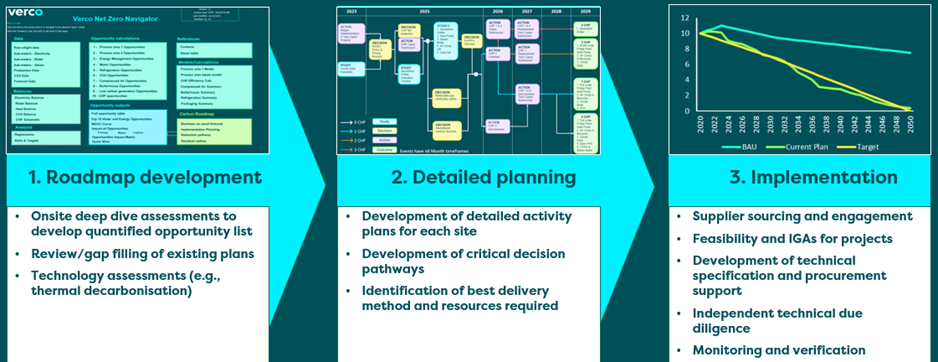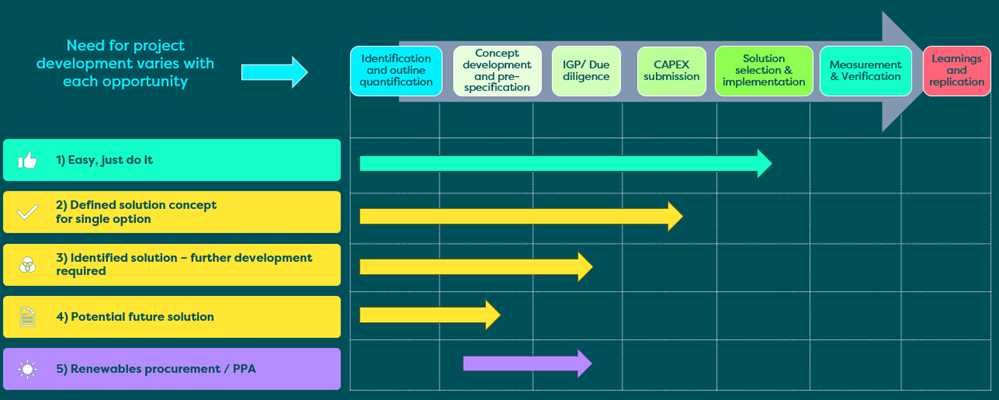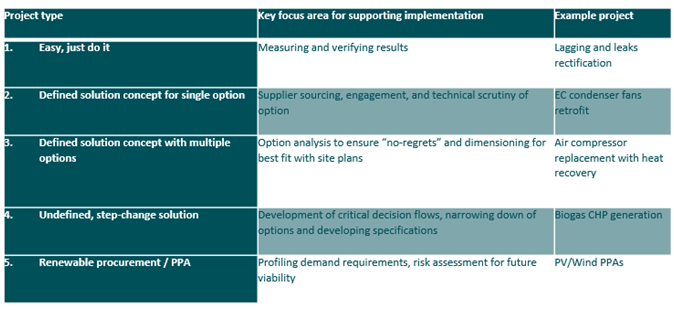Fail to prepare….The role of detailed Net Zero planning in moving from road map to implementation

What is the difference between a Net Zero Roadmap and an Implementation plan? They can sometimes get confused, but it's important to make a distinction between the two and to take the time to understand the whole challenge to achieve the best results.
You have a Net Zero roadmap – what now?
An increasing number of businesses have by now developed a Net Zero roadmap; this would typically provide a clearer view of what is achievable in terms of carbon reduction, at what approximate cost and by when. This would take the pressure off in the short term from those tasked with the job (typically Sustainability Directors and Senior Managers) and provide the business with some reassurance – if not confidence – that Net Zero is achievable, even if some uncertainty out to 2030 or beyond is unavoidable and the business case is not likely to impress CFOs.
Some businesses would have taken the bold step in generating a detailed plan and come up against the more pragmatic challenges of timescales, project interdependencies and resourcing.
Taking time to consider the whole challenge will pay dividends
It is useful to make a distinction between a roadmap and a detailed implementation plan – in plain terms:
A roadmap is likely to explain the broad steps by which an organization can tackle the decarbonization challenge: developing a list of opportunities in a logical sequence, an assessment of interdependencies and risks providing a clearer pathway through the various options and likelihoods and putting a cost to all of this.
A detailed implementation plan is the result of a thorough planning process that distills the findings of the roadmap to what specifically needs to be done: working backwards from the target, what resources we need, who is going to do it, what stage would be completed and by when, what the critical milestones are that might change our plan.
Confusing the two is likely to end up in companies carrying on delivering what they can do in the short term (e.g. small projects or optimisation) but not necessarily organising themselves to ensure they are able to implement the crucial medium and long term projects.
Underestimating that amount of time, effort and commitment to set out the detail plan would be detrimental to delivering on promises made or result in expensive, badly planned solutions. It is not uncommon for businesses to jump to “solution” (sometimes single-solution) or “procurement mode” before the detail planning has been completed. While completing the roadmap is fundamental, detail planning is the bridge between the former and the actual implementation of the projects (among other elements of the strategy) that follows. Figure 1 demonstrates this process and key supporting activities towards implementation.

You may need more resources and skills to deliver your plan
We find a diverse range of opportunities at the back-end of detail plans for which the need for project development will vary depending on the maturity and stage of development (Figure 2). The level of support a business is likely to require will equally vary: risk management is likely to dominate early concept development or potential future solutions, project management will become more dominant during due diligence while solutions implementation will be the focus on more mature projects.

The table below demonstrates some of the key focus areas depending on the project type. The focus of effort would shift with each type but the requirement for independent technical and engineering input throughout the projects’ lifecycle will ensure these remain relevant to the end goal and are not treated in isolation or in haste.

Minimising the risk and setting up for success
There is a natural tendency for many companies to want to know how targets will be achieved before starting implementation. Aside external variables causing uncertainty (policy, commercial, technical), businesses can take steps to minimise risk:
It’s important to understand what stage you’re at right now in terms of the level of detail you’ve got to with detail planning
Planning technical engineering resource to develop and progress project development activities, understanding this will vary depending on the stage of development
The reduction roadmap provides confidence based on specific projects but it is the prioritization, resourcing and sequencing of these projects that form the detail plan
Skipping the progression stages of the more complex projects by reacting to pressures to get to “solution” or “procurement” mode too early is likely to add risk, expense and ending up in missing the target.
Webinar: From roadmap to implementation: What a best practice implementation plan can achieve.
Because a great deal can be learned from others, Head of Deliver for Zero, Thanos Patsos will explore the optimal implementation plan in the real world. He will demonstrate what the net zero leaders are doing, how they are doing it and what they are achieving. Using examples, Thanos will illustrate key learnings on the following topics:
- What an optimal implementation plan looks like
- The skills and resources you will need to deliver the plan
- Common pitfalls and how to avoid them
- The results that an optimal implementation plan achieves
The webinar has already taken place but you can register to watch a recording here:
From roadmap to implementation: What a best practice implementation plan can achieve
